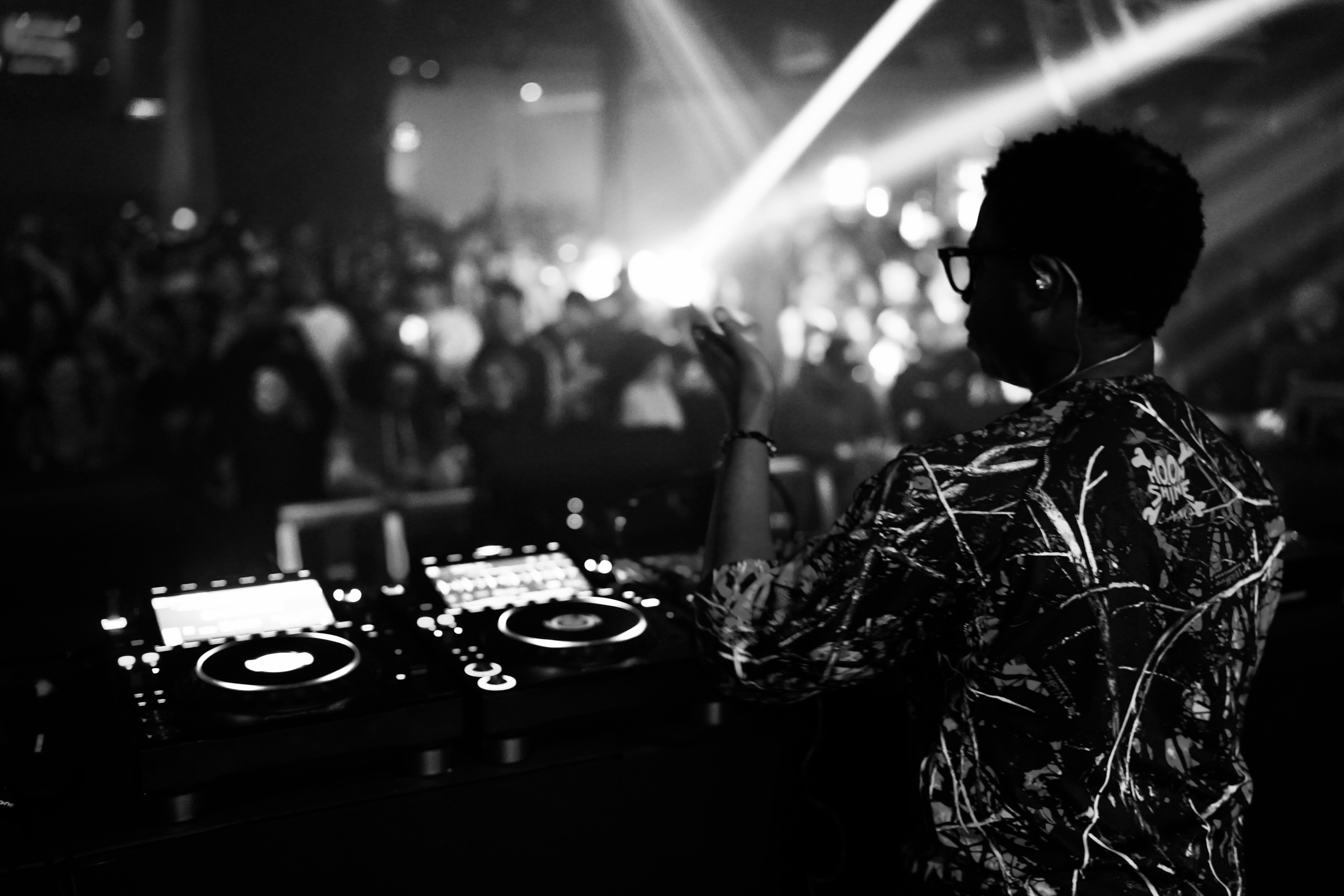
Mike Ramirez (shoebox)

Audio By Carbonatix
As September comes to a close, four artists will gather in Moffat, Colorado, to close out the season at Woodlands, an invite-only EDM festival that runs from September 26-28. They’ll do so not just as performers, but as carriers of a larger evolution — one that has little to do with headliner prestige or label affiliation, and everything to do with Denver’s subconscious embrace of diversity and experimentation.
Jeremy Howard, known globally as Sinistarr, is from Detroit and says the city’s population was 90 percent Black at the time (it’s currently 79 percent Black). Rameau Velez, who performs as both Rameau Control and Pounces of Haus Catz, was raised by a Black Puerto Rican musician in St. Thomas, steeped in the sounds and memory of Caribbean Carnival. Danny Pauta (Mirlo) and Juan Miguel Pinto Diaz (J Bolivar), who together form DOSIS, were both shaped by Ecuadorian musical traditions and the layered dislocations of immigrant life. Their backgrounds — Black, Caribbean, Latin, diasporic — don’t just inform the music they make; they are the music they make. And that music is shaping Denver’s club culture in unexpected, cross-pollinated ways.
“This is kind of the Wild West, this whole situation,” says Howard, reflecting on how so many musicians in Denver play so many different styles, choosing to forge their own path rather than conform to a continuity.
For a city often described in terms of its absence — whether that be of infrastructure, history or cohesion — Denver’s underground instead thrives on an abundance of possibilities. “Everyone’s different,” says Pauta, “and no one’s on the same wave of sound.” He says this ethos extends into the band scene as well, in which he is the drummer and producer for indie Latin rock band the Manānas.
This lack of sonic homogeneity isn’t accidental. It’s not just that there’s room to experiment in Denver, but that experimentation is the norm.
For example, Howard, whose roots in Detroit stretch from Motown’s shadows to Movement Festival’s stages, carries that city’s legacy as a living reference point that he brings to Denver — a sound that Denver welcomes openly. “My stuff was always Detroit influenced through and through,” he said. “I kind of saw myself as a field reporter of that.”
This freedom largely comes from Denver audiences’ willingness to embrace new sounds. “Maybe they see a set and they’re like, ‘Holy shit, what was that?’ And then that changes everything. They become immersed,” says Velez. “They’re like, ‘I need more of this,’ even though they didn’t even know it existed before that party.”
But unlike Detroit or New York, where dance music’s cultural roots are canonized, Denver operates without a single lineage. It moves laterally, not upward. That looseness has drawn in artists seeking a different kind of freedom. “I feel unafraid to experiment and push myself to the fringes of electronic music,” says Pinto Diaz, who grew up between Quito, Ecuador, and Longmont, mining family record collections of João Gilberto and Morton Subotnick before discovering his voice through broken gear and MPC beats.
His project with Pauta, DOSIS, embodies that hybridity. Their sound folds Ecuadorian corta venas melodies into underground bass and techno, filtered through the emotional logic of dual belonging. The project, they say, was meant to represent their experience living on the fringes of two cultures.
That experience, sharpened by a sense of both proximity and dislocation, gives the duo’s sound its shape, and gives Denver a new lexicon — a lexicon doesn’t need permission to exist here.
Velez’s path is different. Raised in St. Thomas, he remembers the Carnival celebrations and steel drum bands, the music of rebellion and survival. “Music, song and dance were a key part in the planning and execution of these uprisings,” he says. “These traditions came from both Indigenous Caribbean and African cultures melding and building into one another.”
Today, his DJ sets channel that legacy through the lens of rhythmic density. That means big drums, low frequencies, and a sense of groove that predates genre.
When he returned to St. Thomas after years in Denver, he found its airwaves unchanged. “You’ll hear reggae, dancehall, salsa, calypso, rock, house and electronic,” Velez says, “and most of it is from local artists”
That continuity of place and sound still moves through him, even in the Rockies.
The Denver that these musicians describe isn’t a scene in waiting. It’s arrived, but it’s happening outside the bounds of institutional awareness. “It’s crazy how many people book electronic music that don’t even know or understand it, really,” says Velez. Pinto-Diaz puts it more bluntly: “The City of Denver is doing fuck-all to help late-night culture.”
The artists who shape its sound do so without the visibility afforded to other cities. “You don’t see them outside,” said Howard, referring to the Denver-based artists headlining major venues. “They’re getting booked to all these crazy things and sell out shows. Their management is high-fiving each other in the back and like, nobody sees them out at a regular club.”
This implies that artists who find success here don’t necessarily define themselves as Denver artists since they don’t actively participate in its community. Despite that disconnect, there’s a quiet confidence among the group that something more enduring is taking root. “People fundamentally understand the underground stuff here,” says Pinto Diaz.
Pauta echoes the hope. “The challenge is to keep pushing the bar forward while contributing your own voice to it,” he says.
In Denver, that challenge doesn’t feel abstract. It’s being met, daily, in ways that don’t always announce themselves. Because in the absence of canon, the diaspora writes its own.
Find more concerts on our Denver concert calendar.